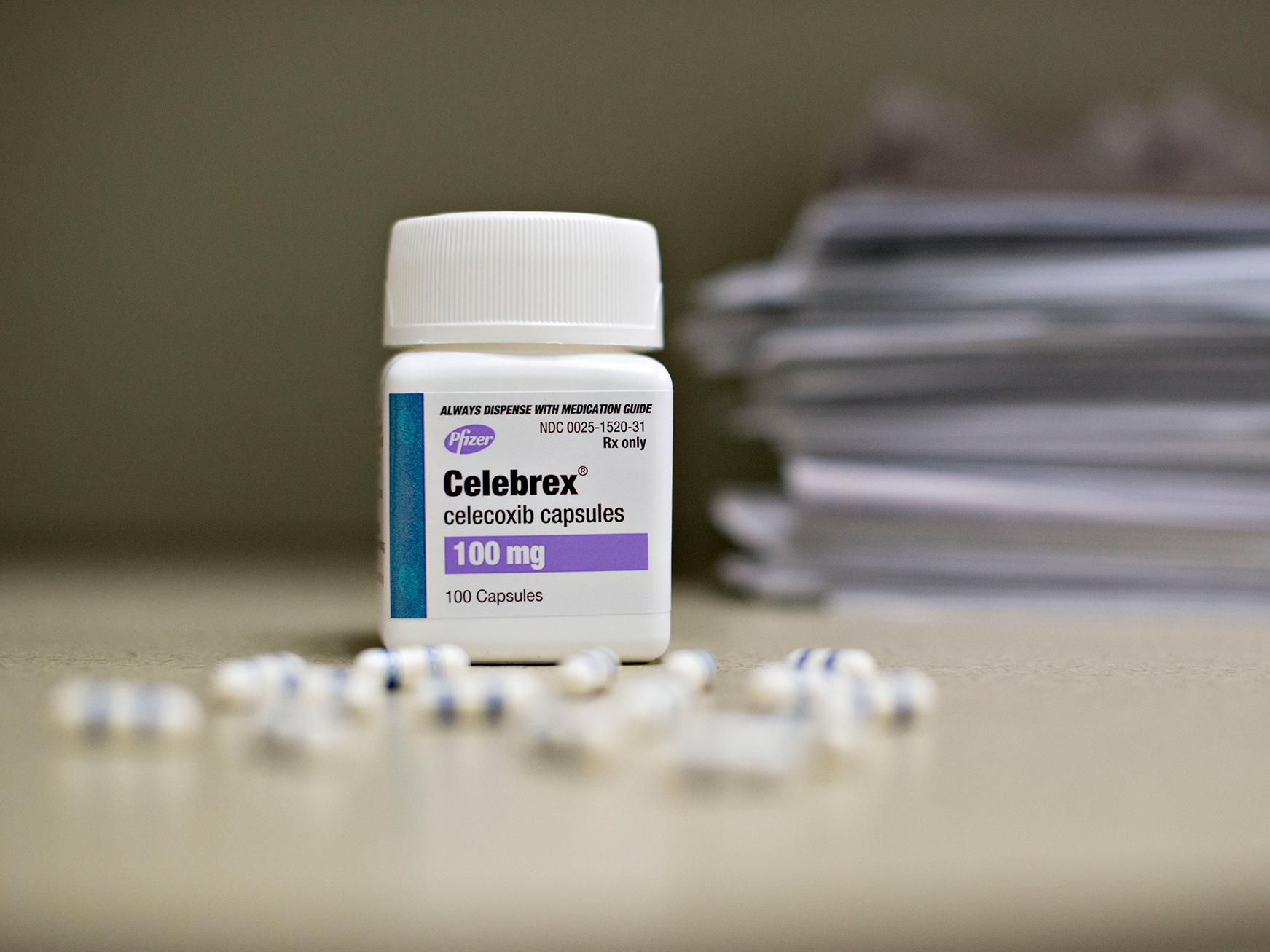For individuals seeking relief from pain and inflammation, considering the generic name for Celebrex is a wise choice. This medication, known scientifically as celecoxib, falls under the category of nonsteroidal anti-inflammatory drugs (NSAIDs) and works by blocking specific enzymes that contribute to inflammation.
When it comes to managing conditions such as arthritis, acute pain, or menstrual discomfort, celecoxib offers targeted action with a lower risk of gastrointestinal side effects compared to traditional NSAIDs. It’s advisable to consult a healthcare professional to determine the appropriate dosage and ensure it aligns with your health profile, especially if you have existing medical conditions.
In addition, understanding the potential side effects of celecoxib can help users make informed decisions. While it’s generally well-tolerated, possible side effects can include cardiovascular risks, so proactive communication with your doctor regarding your overall health is essential. Leveraging the benefits of celecoxib can lead to improved quality of life for those managing ongoing pain.
- Generic Name Celebrex: A Comprehensive Overview
- Indications and Uses
- Dosage and Administration
- Possible Side Effects
- What is Celebrex and Its Generic Alternatives?
- Mechanism of Action of Celebrex in Pain Relief
- Targeting Inflammation
- Fast Onset of Action
- Indications and Uses of Celebrex in Medical Treatment
- Pain Management
- Additional Uses
- Dosage Recommendations and Administration Guidelines for Celebrex
- Specific Indications
- Administration Instructions
- Potential Side Effects and Safety Considerations of Celebrex
- Kidney and Liver Function
- Allergic Reactions
- Interactions with Other Medications and Food
- Comparative Effectiveness: Celebrex vs. Other NSAIDs
Generic Name Celebrex: A Comprehensive Overview
Celebrex, with the generic name celecoxib, serves as a nonsteroidal anti-inflammatory drug (NSAID). It specifically inhibits COX-2 enzymes, reducing inflammation and pain. Celecoxib is commonly prescribed for conditions such as osteoarthritis, rheumatoid arthritis, and acute pain management.
Indications and Uses
- Osteoarthritis: Alleviates joint pain and stiffness.
- Rheumatoid Arthritis: Manages symptoms and improves quality of life.
- Acute Pain: Offers relief for short-term pain following surgery or injury.
- Dysmenorrhea: Treats menstrual pain effectively.
Dosage and Administration
Celecoxib is typically available in capsule form, with common dosages ranging from 100 mg to 200 mg. Health professionals often recommend starting with a lower dose to assess tolerance.
- Follow physician guidelines for dosage adjustments.
- Take the medication with food to minimize gastrointestinal side effects.
- Adhere to the prescribed schedule for optimal results.
Monitoring for potential side effects is crucial, including gastrointestinal issues, cardiovascular risks, or allergic reactions. Regular check-ups ensure the safe use of celecoxib, especially for long-term treatment.
Possible Side Effects
- Gastrointestinal discomfort: nausea, diarrhea, or abdominal pain.
- Cardiovascular effects: increased risk of heart attack or stroke.
- Kidney problems: changes in urine output or swelling.
Consult a healthcare provider if experiencing any adverse effects or symptoms that worsen during treatment. Safe usage and effective management of health conditions significantly rely on ongoing communication with medical professionals.
In conclusion, celecoxib offers targeted relief for various inflammatory conditions, making it a valuable option in pain management protocols. Proper adherence to dosage, attention to side effects, and regular consultations with healthcare providers enhance the benefits of this medication.
What is Celebrex and Its Generic Alternatives?
Celebrex, known generically as celecoxib, is a nonsteroidal anti-inflammatory drug (NSAID) commonly prescribed for pain relief and inflammation reduction. It primarily targets conditions like arthritis, acute pain, and menstrual discomfort.
It’s crucial to consider that Celebrex is a COX-2 inhibitor, which helps minimize stomach irritation compared to traditional NSAIDs. Patients often prefer it for managing chronic pain while reducing gastrointestinal side effects.
Generic alternatives to Celebrex include:
- Celecoxib – This is the direct generic form of Celebrex and offers the same effectiveness and dosage.
- Rheumatrex – Sometimes prescribed for rheumatoid arthritis, it contains methotrexate, providing anti-inflammatory benefits but acts differently.
- Diclofenac – Another NSAID that is often considered for pain relief, though it works via a different mechanism than Celebrex.
When selecting a medication, consult your healthcare provider for recommendations based on your specific needs and medical history. Generic options typically cost less than brand-name drugs, making them a financially savvy choice without sacrificing quality.
Be aware of potential side effects, including gastrointestinal issues, cardiovascular risks, and skin reactions. Monitor your body’s response after switching to any alternative and report any adverse effects to your doctor promptly.
Mechanism of Action of Celebrex in Pain Relief
Celebrex effectively alleviates pain by selectively inhibiting cyclooxygenase-2 (COX-2), an enzyme responsible for the synthesis of prostaglandins. Prostaglandins play a significant role in promoting inflammation, pain, and fever. By blocking COX-2, Celebrex reduces the levels of these inflammatory compounds, leading to decreased pain and swelling.
Targeting Inflammation
This targeted action provides pain relief for a range of conditions, including arthritis and acute pain episodes. Unlike traditional nonsteroidal anti-inflammatory drugs (NSAIDs) that inhibit both COX-1 and COX-2, Celebrex minimizes gastrointestinal side effects by sparing COX-1, which protects the stomach lining.
Fast Onset of Action
Celebrex, containing the active ingredient celecoxib, primarily treats pain and inflammation associated with various conditions. It effectively manages symptoms of osteoarthritis and rheumatoid arthritis, offering relief to those suffering from these chronic diseases.
Pain Management
This medication alleviates acute pain, including pain from menstrual cramps and post-surgical discomfort. Patients often benefit from its anti-inflammatory properties that assist in reducing swelling and enhancing mobility.
Additional Uses
Celebrex also plays a role in managing familial adenomatous polyposis (FAP), a genetic disorder leading to the development of numerous polyps in the colon. By reducing the risk of polyp formation, Celebrex aids in the prevention of colorectal cancer in individuals with FAP.
| Condition | Use of Celebrex |
|---|---|
| Osteoarthritis | Pain relief and inflammation reduction |
| Rheumatoid Arthritis | Symptom control and improved joint function |
| Acute Pain | Effective in managing post-operative and menstrual pain |
| Familial Adenomatous Polyposis | Reduces risk of polyp development in the colon |
Always consult with a healthcare provider for appropriate dosages and potential interactions before starting treatment with Celebrex.
Dosage Recommendations and Administration Guidelines for Celebrex
The standard starting dosage for Celebrex (celecoxib) is typically 200 mg per day. This may be administered as a single dose or divided into two 100 mg doses. For patients requiring additional pain control, the dosage may be increased to 400 mg per day after evaluating the patient’s response and tolerance.
Specific Indications
For osteoarthritis and rheumatoid arthritis, the recommended dosage remains 200 mg daily, though some patients may benefit from increasing up to 400 mg daily based on their clinical response. In acute pain situations, a single dose of 400 mg may be appropriate at the onset, followed by 200 mg on the following day, if necessary. For patients with familial adenomatous polyposis, a dosage of 400 mg twice daily is advised.
Administration Instructions
Take Celebrex with a full glass of water, ideally with food to minimize gastrointestinal discomfort. Avoid crushing or chewing the capsules. Regularly monitor for side effects, especially gastrointestinal or cardiovascular symptoms, and consult with a healthcare provider if any concerning symptoms arise. Adjustments may be necessary for those with hepatic or renal impairment.
Potential Side Effects and Safety Considerations of Celebrex
Monitor for gastrointestinal issues, including stomach pain, indigestion, or ulcers. Take Celebrex with food to minimize these effects. Regular check-ups with a healthcare provider are vital to assess any emerging gastrointestinal complications.
Beware of cardiovascular risks. Celebrex may increase the likelihood of heart attacks or strokes, especially in patients with pre-existing heart conditions. Discuss your medical history thoroughly with your doctor before starting this medication.
Kidney and Liver Function
Regularly evaluate kidney and liver function through blood tests. Celebrex may affect these organs, particularly in patients with established issues. Hydration helps protect kidney function, so drink plenty of fluids while on this medication.
Watch for signs of liver problems, such as jaundice, dark urine, or abdominal swelling. Report any concerning symptoms to your healthcare provider immediately.
Allergic Reactions
Be alert for signs of an allergic reaction, like skin rashes, itching, or swelling. Discontinue use if these symptoms occur and seek medical attention promptly. Inform your doctor of any known allergies before treatment.
Incorporating regular follow-ups with your healthcare provider enhances safety while taking Celebrex. Your health team can provide tailored advice and adjustments to your treatment as necessary.
Interactions with Other Medications and Food
Celebrex may interact with several medications and food, impacting its efficiency and safety. Monitor your medication combinations closely.
Avoid taking Celebrex with blood thinners such as warfarin. This combination heightens bleeding risks. Regularly check your INR levels if you must use them together.
Nonsteroidal anti-inflammatory drugs (NSAIDs) like ibuprofen or naproxen can amplify the risk of gastrointestinal issues. If you’re using Celebrex, limit the intake of other NSAIDs. Consult your doctor for alternatives if you find pain relief insufficient.
Certain diuretics, particularly loop or thiazide diuretics, might lose effectiveness when combined with Celebrex. Discuss your medication list with your healthcare provider to avoid complications.
Antidepressants, especially SSRIs, can increase the likelihood of gastrointestinal bleeding when taken with Celebrex. If you’re on SSRIs, convey this to your doctor for careful management.
Grapefruit and grapefruit juice might affect the metabolism of Celebrex. Limit or avoid grapefruit products to ensure proper drug processing in your body.
Stay aware of any changes in your health status when combining Celebrex with other treatments. Regular communication with your healthcare professional is key to safe and effective use.
Comparative Effectiveness: Celebrex vs. Other NSAIDs
Celebrex, a selective COX-2 inhibitor, shows a significant safety profile compared to traditional NSAIDs like ibuprofen and naproxen, particularly for gastrointestinal issues. Studies indicate that patients taking Celebrex report fewer gastrointestinal side effects, making it suitable for long-term use in individuals with a history of ulcers or gastrointestinal bleeding.
The analgesic effect of Celebrex is comparable to that of other NSAIDs when treating conditions like arthritis. Research has demonstrated that it effectively reduces pain and inflammation with a similar efficacy to ibuprofen but with a lower risk of gastrointestinal complications.
For patients who require strong pain relief, a consideration is the dosing schedule. Celebrex is often dosed less frequently than traditional NSAIDs, which can enhance adherence among patients. The once or twice-daily dosing can improve patient satisfaction and compliance.
Cardiovascular safety is another factor. Traditional NSAIDs have been linked to increased cardiovascular risks, while Celebrex poses a lower risk when used at the recommended doses. However, monitoring is still advised for patients with pre-existing cardiovascular conditions.
In cases where inflammation is predominantly an issue, Celebrex may outperform some NSAIDs due to its targeted action. However, for acute pain management, instant-acting NSAIDs may provide quicker relief, emphasizing the need to tailor the choice of medication based on individual patient needs and conditions.
In summary, Celebrex offers a favorable profile for pain management, particularly for patients with specific health risks associated with traditional NSAIDs. Evaluating individual patient scenarios and preferences is vital when determining the most appropriate choice of medication.









